How to Water Succulents (Easy Care Guide!)
Once you get your adorable indoor succulents home, you may come to realize you have no idea when you’re supposed to water them. If so, you’re not alone! It’s a common question and one that I see people asking all the time.
How frequently you water you succulents all depends on the type of plant, the potting material, and where it lives inside your home.
To help clear up any confusion, here are some helpful guidelines to follow when watering your plants at home!
Pin this to your favorite gardening board on Pinterest!
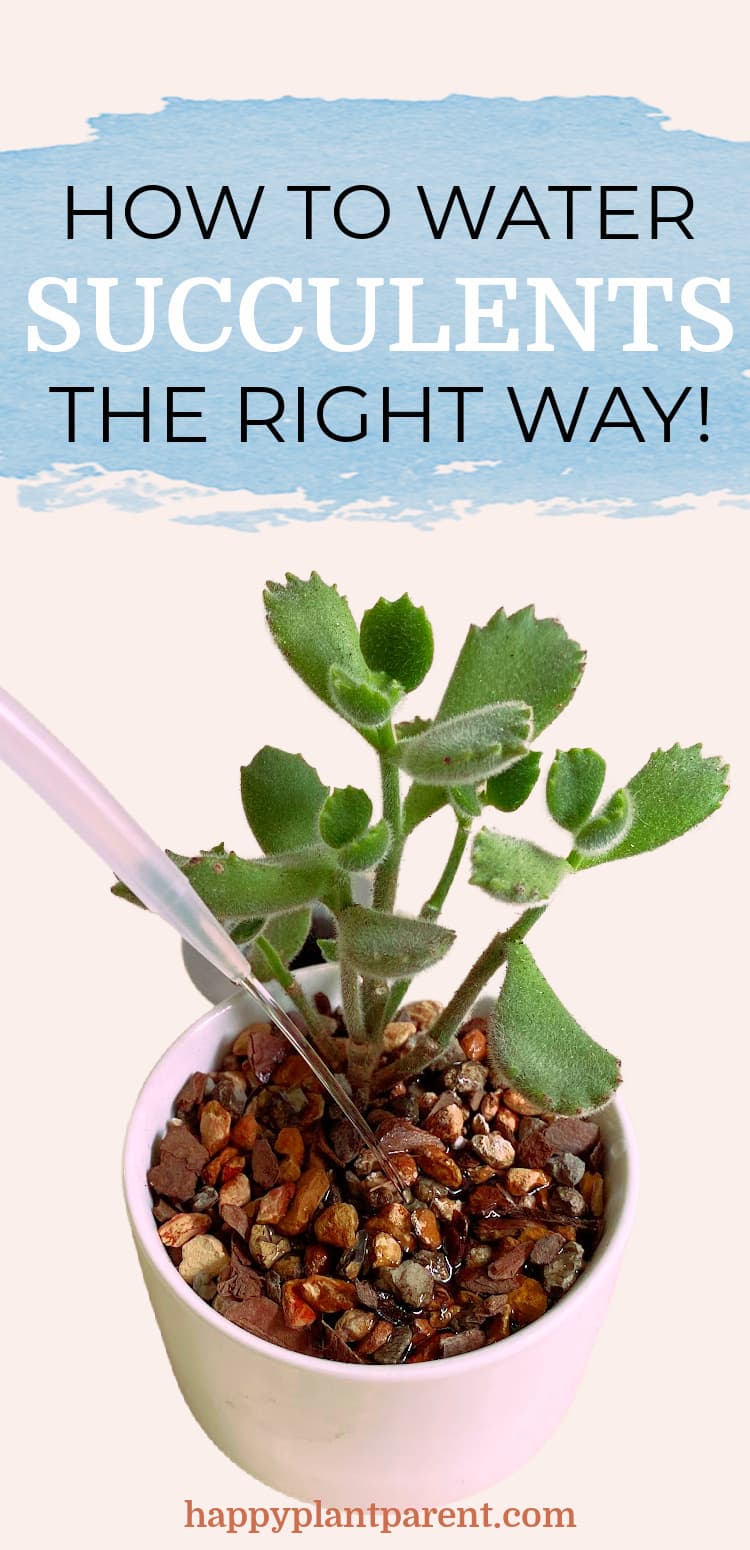
(This post contains affiliate links. If you click one and make a purchase, I may receive a commission at no extra cost to you. Read the disclaimer here. Thank you for your support!)
Succulents are easy to care for, which is why they’re such a popular houseplant. Even if you typically have a “black thumb”, you can keep your succulents alive and thriving. You just need to learn a few basic steps.
Besides adding some beautiful greenery to your home decor, indoor succulents are good for so many things!
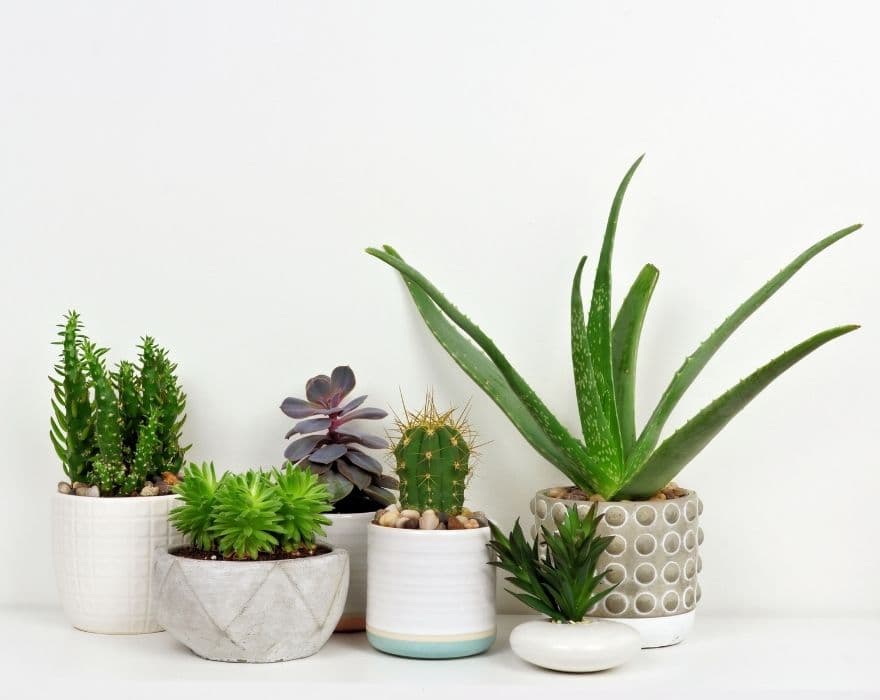
Some of their super powers include reducing your stress levels, purifying the air, and, in the case of Aloe, even getting rid of your sunburn.
Succulents do so many things for us, it’s crucial that we treat them well in return by giving them the proper amount of water, the right kind of soil, plenty of sun and a cozy pot (with drain holes!)
One very important thing to note: if you try to water your indoor succulents the same way you water your other house plants, things can get ugly real quick.
Let’s take a look at the correct way to water your succulents!
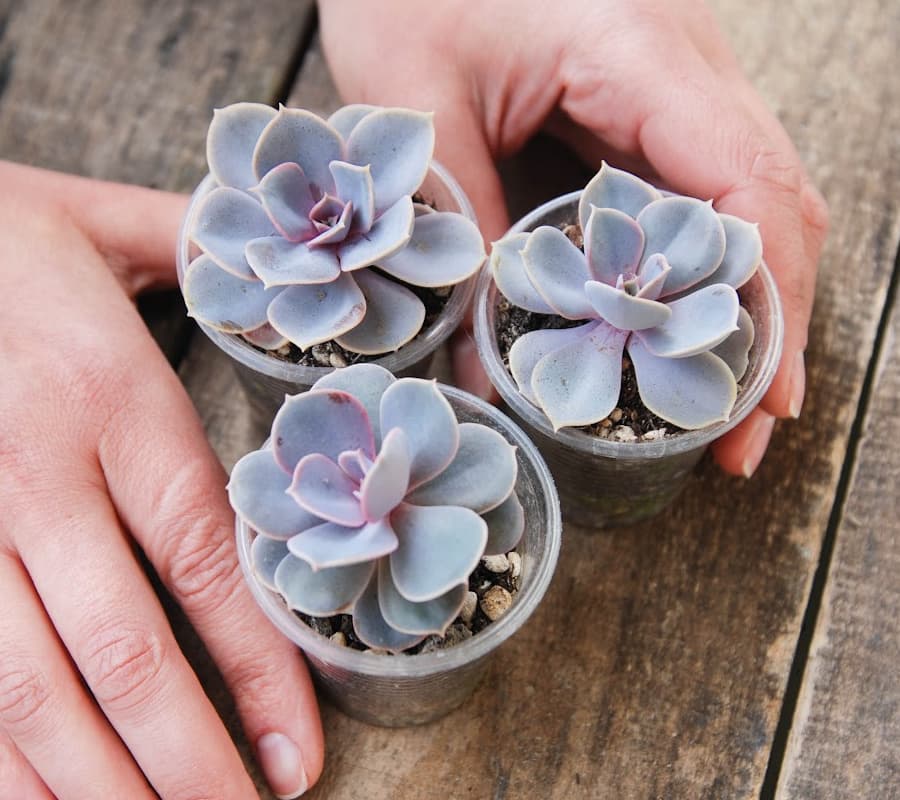
How to Properly Water Your Succulents
No matter what type of succulent you have living in your home, the best way to water them is to soak the soil very thoroughly, and then let it dry out completely before you water it again.
A lot of times succulent owners think they should just give their succulents a small drink or spritz of water here and there because they’re super afraid of over watering, but that does a lot more harm than good.
Over time, under watering will cause your poor little plants to develop a shallow root system, which is no bueno.
Succulents need to be watered deeply, but allowed to dry out before their next drink. This method is called the soak and dry (or drench and drain) method and it’s crucial for the health of your plants!
You’ll want to use a proper watering can or a squirt bottle made for plant watering, and not just mist them with a spray bottle.
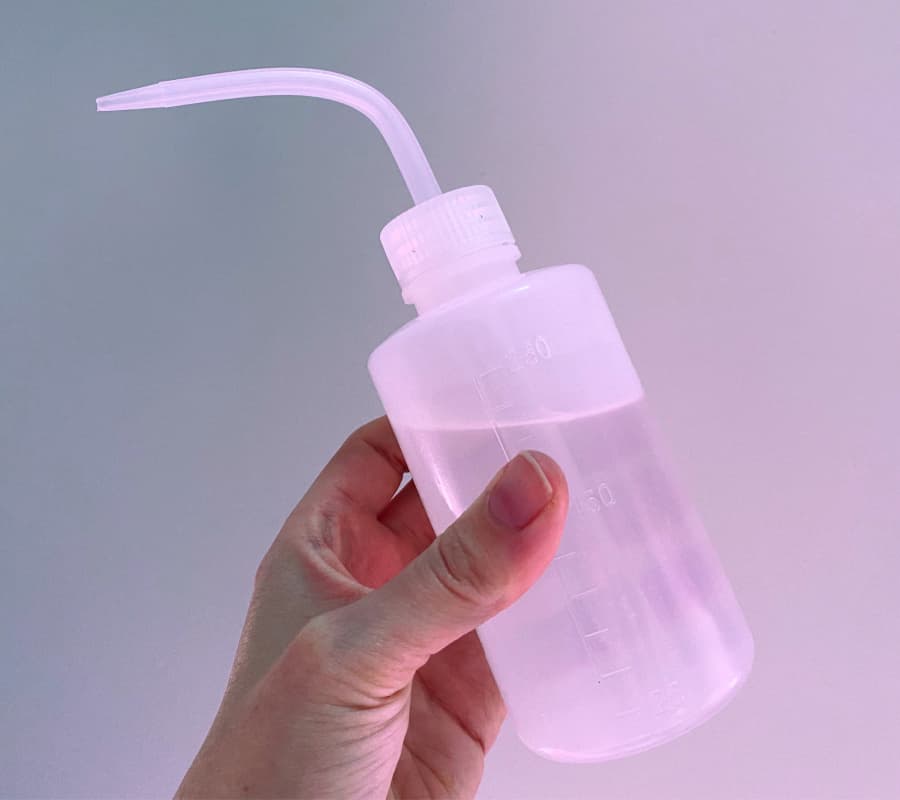
Pour the water all over the soil at the base of the plant. It’s best to try not to get water on the leaves, as it can cause them to rot.
If you do, just dab them with a paper towel and it’ll be OK.
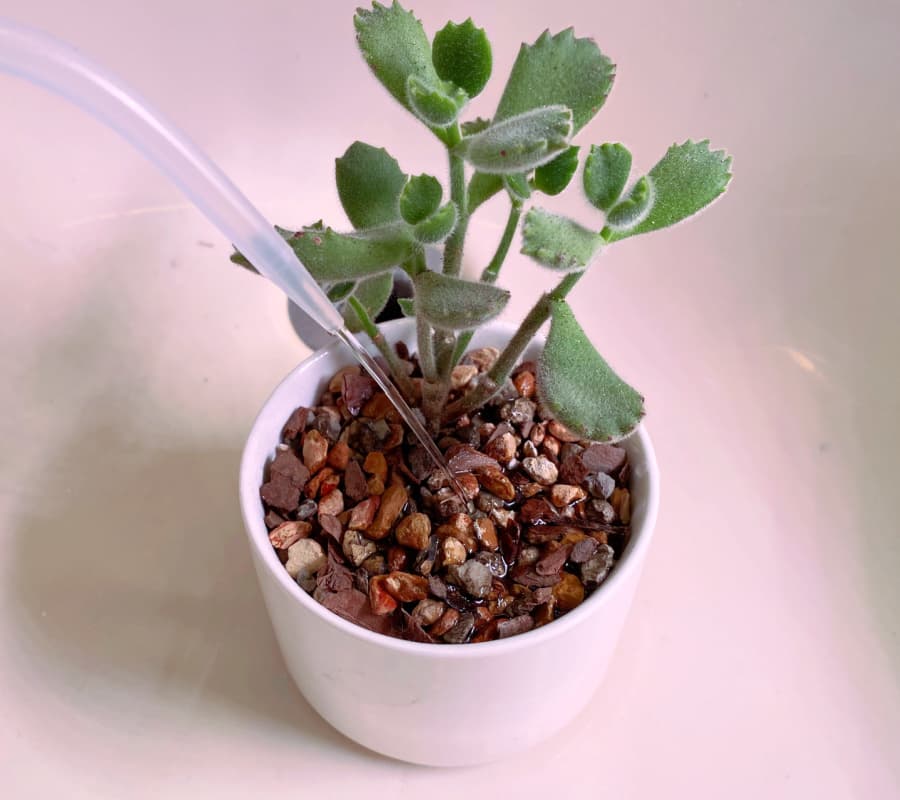
Most importantly, give the soil a good soaking until the water pours out the drain hole at the bottom of the pot.
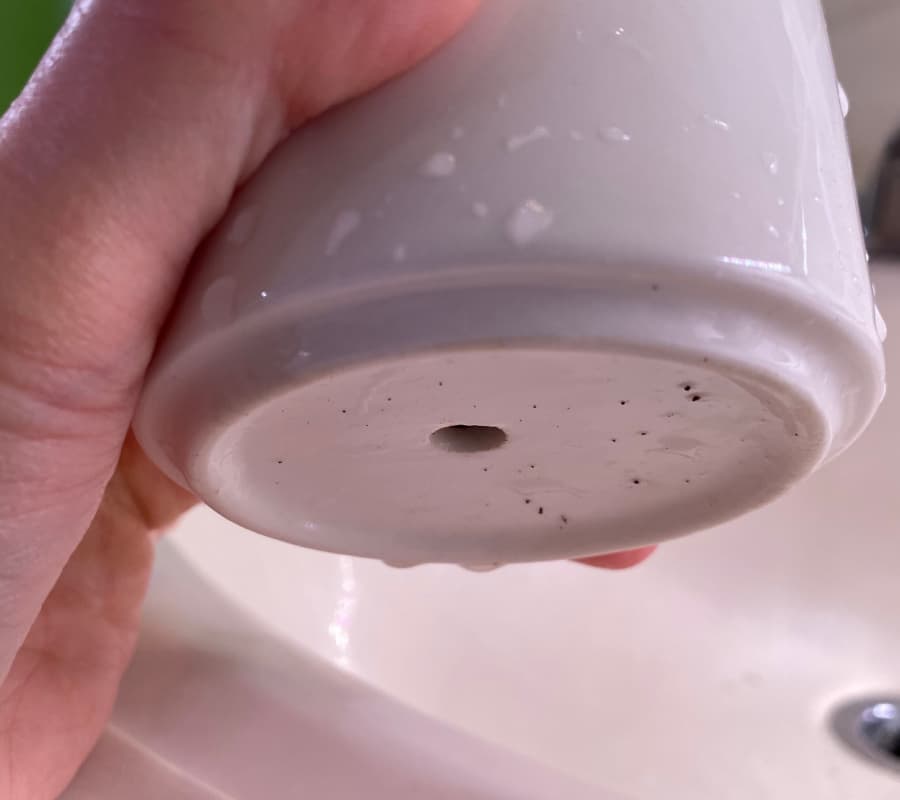
Then wait until the soil is COMPLETELY dry before you water again.
It’s a good idea to keep a record of when you watered so you don’t end up watering again too soon.
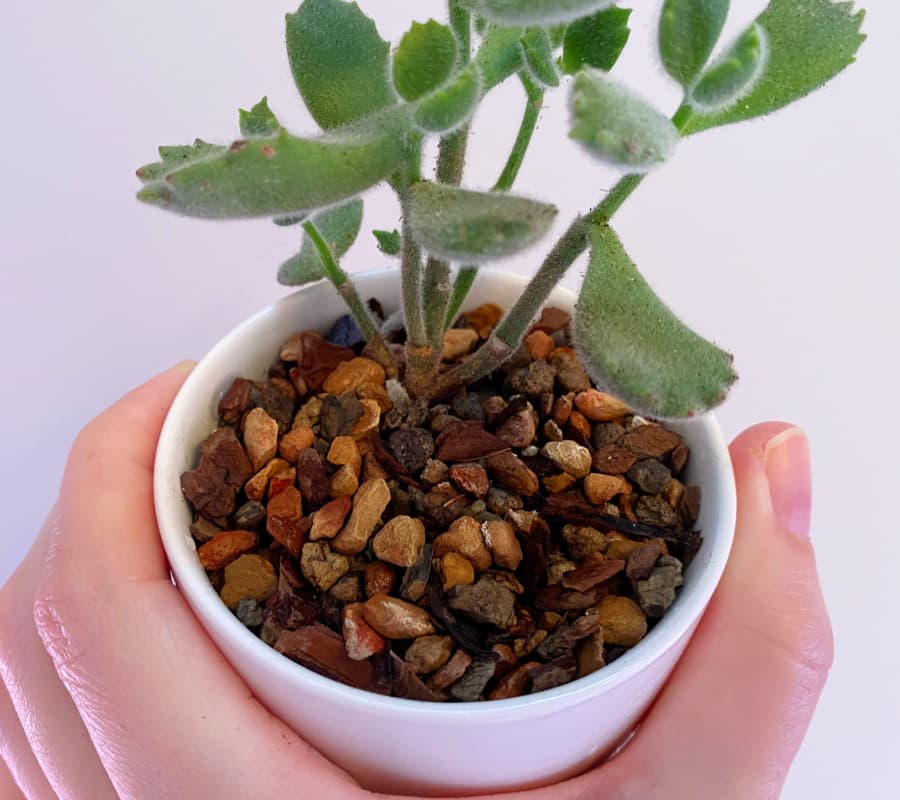
Watering succulents isn’t rocket science, but it takes a little while to get used to the idea of watering less than your other houseplants!
That being said, watering your succulents on a strict schedule isn’t the best idea, either. It’s better to wait until your succulent shows signs of needing a drink before you water it.
Some signs of thirst in succulents include:
- wrinkled leaves
- droopy leaves
- dull color
Before you just dive in and say “cool, I can do that!”, there are some other important things you need to know.
Now that we’ve covered how to properly water succulents, let’s take a look at all the factors you need to consider when you’re deciding how often you should water plants.
Get 10% off your succulent purchase at Mountain Crest Gardens!
What Kind of Succulent is it?
Some succulent plants like a little more water, and others want you to practically forget they exist!
For instance, my Jade plant does best if I water it roughly once every two weeks. But if you have Lithops, you’re better off waiting a lot longer in between waterings.
I have a String of Pearls that starts to look dull and sad if I don’t water it every 5 days or so.
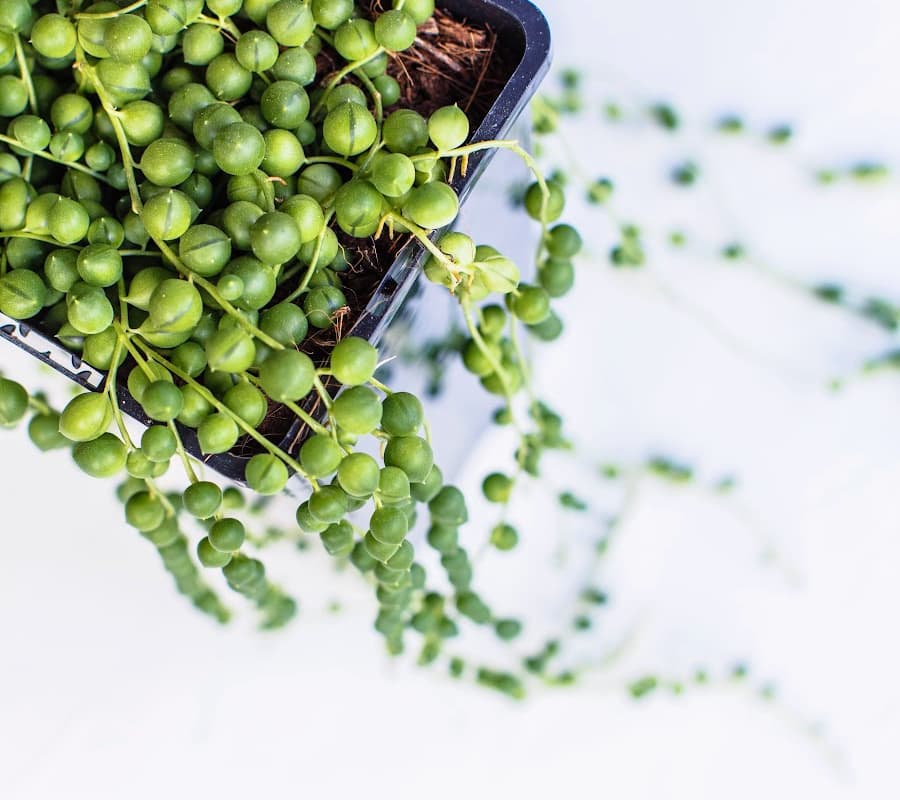
It’s important to do some research on the type of plant you have and see if it has special water needs.
One simple way to do that is with the smart phone app Picture This. You can take a picture of your succulent (or any other houseplant) and it’ll tell you all about it. It’s one app that’s super handy and I love it!
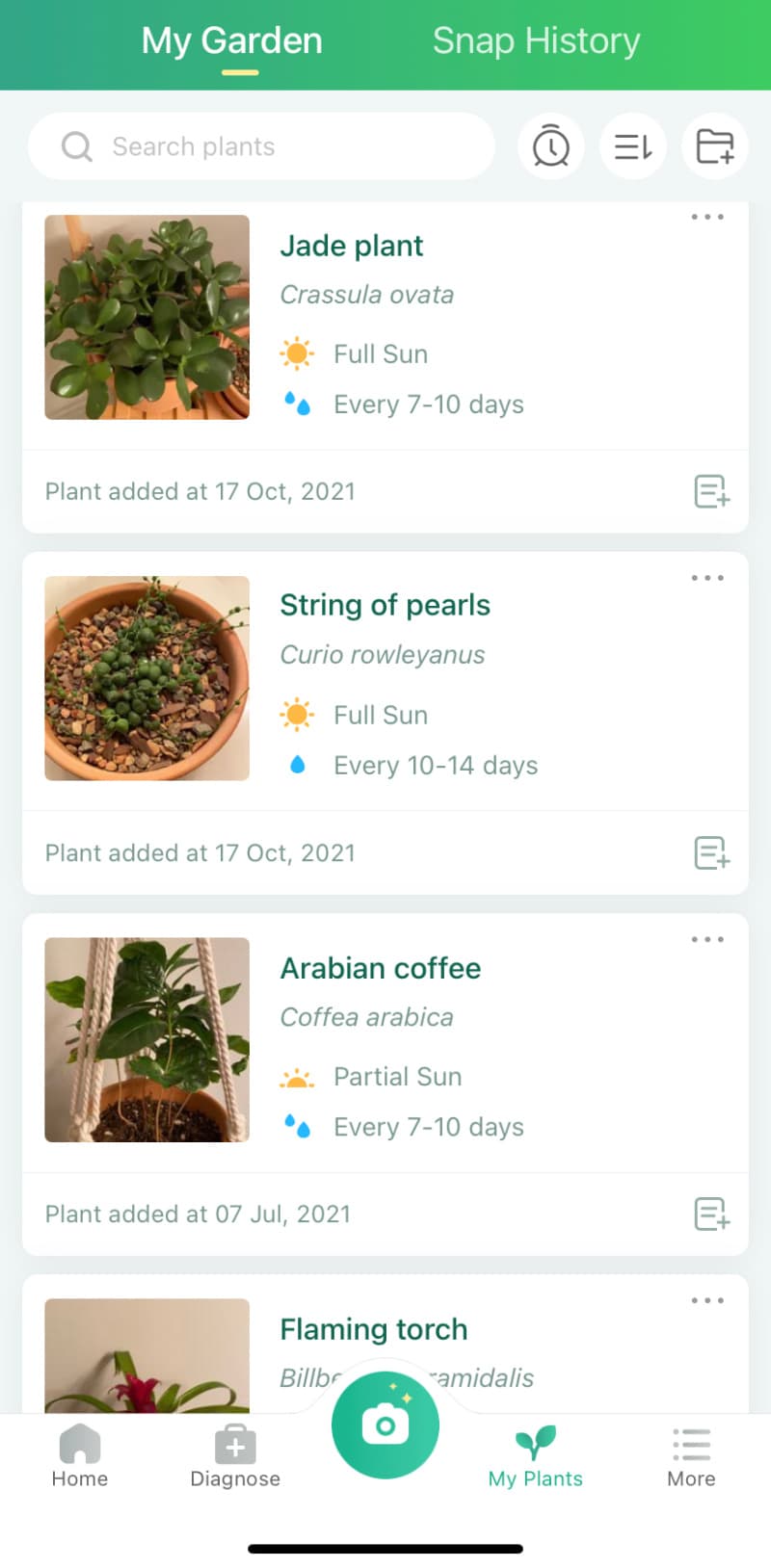
Once you’ve had your plants for a while, you’ll get a feel for their needs and you’ll know when they need a drink.
Your indoor succulents will have different watering needs than your outdoor plants. Indoor plants will be getting less direct sunlight so they tend to hold water longer and need less frequent watering.
Outdoor succulents on the other hand may need to be watered more often, especially if they get a lot of direct sun.
So if you have succulents that spend part of the year outdoors and part indoors, you’ll need to adjust your watering schedule accordingly.
What Type of Soil is Your Succulent Planted in?
Potting your succulent in the proper type of soil with good drainage is crucial for its health and well being.
Most of the time when you bring your succulents home from the store, they’re potted in regular old peat based potting soil. It’s unfortunate, but it’s true. That is one of the worst types of soil for succulents.
You might notice the soil that your new plants come home in is packed and hardened around the roots, or it might be super soggy from frequent watering. Either situation is no good for your new plant friends!
After you’ve had your plants home for a few days and allowed them to acclimate, it’s a good general rule to re-pot them into a gritty soil mix so that excess water will drain properly.
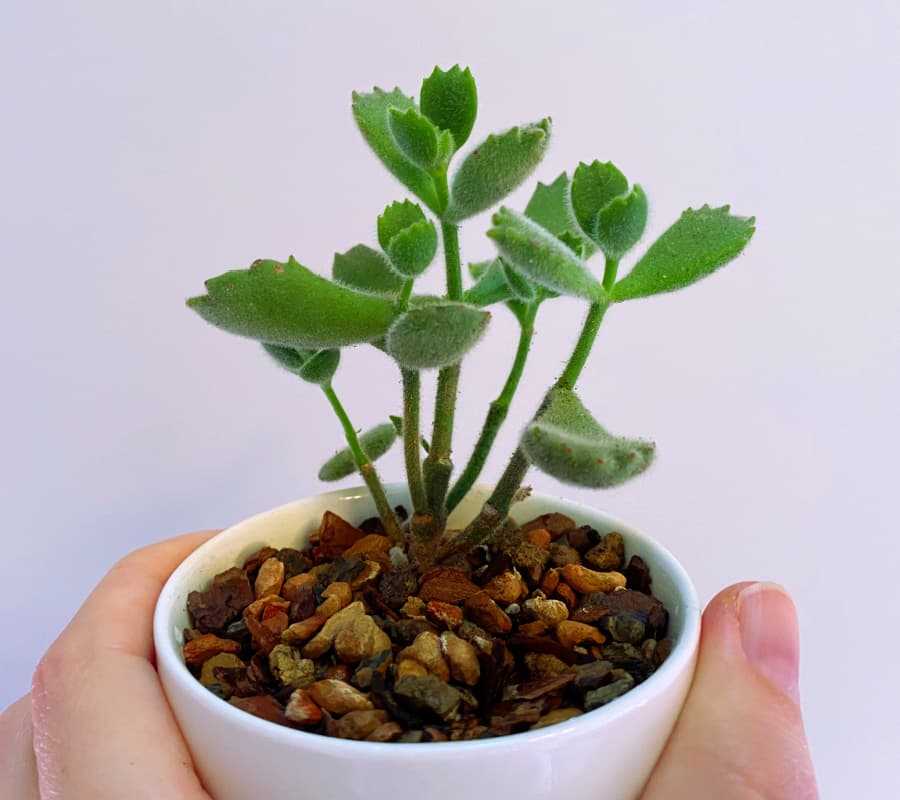
Then you can start the soak and dry method for watering, knowing that it’ll drain quickly and your succulents will get enough water without languishing in soggy soil.
This is my absolute favorite gritty mix for succulents and I’ve had great luck with it.
Does your pot have drainage holes?
It’s a VERY good idea to plant your succulents in pots with drainage holes. Otherwise, excess water will likely pool at the bottom of the pot which will cause your succulent roots to eventually rot.
When you water your plants that DO have drainage holes, you can pour plenty of water on to make sure the soil is completely soaked without worrying. The excess will just come pouring out the bottom.
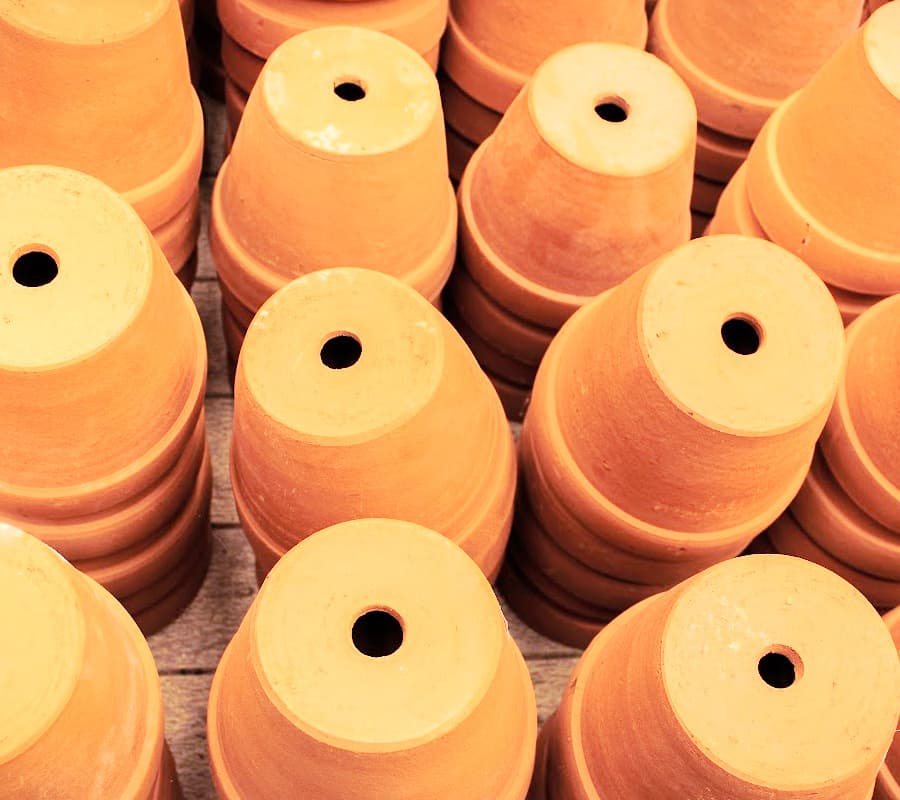
However, if you do have your succulents planted in a pot without drainage, don’t despair. You’ll just want to measure the amount of water you put in the soil to make sure it’s not too much.
A good method is to use half as much water as the amount of soil, so if it’s about 2 cups of soil, go for 1 cup of water. And make sure it’s totally dry before the next watering!
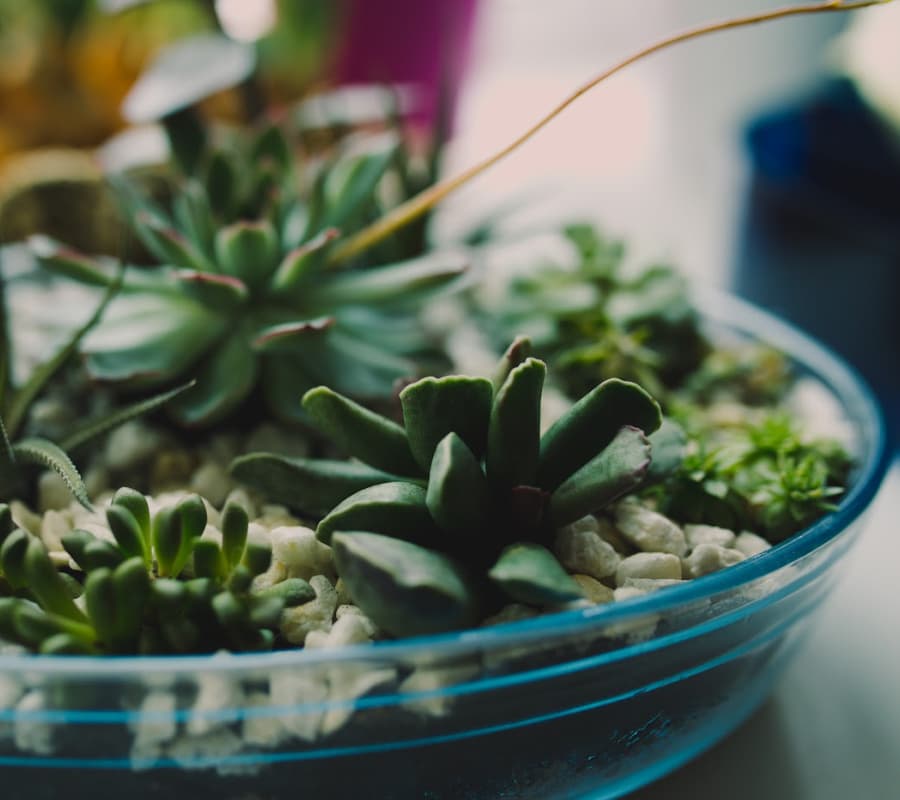
If your indoor succulent pot doesn’t have drainage holes and you want to change that, you can use a special drill bit to drill them yourself.
Worried your drainage holes are too big? Pick up some of these little plastic mesh screens to cover the holes so you don’t lose any potting mix out the bottom.
What type of pot is your succulent planted in?
The type of container you’re using or the type of soil your succulent is planted in is important to take into consideration as well.
For example, unglazed terracotta pots are porous and wick the water out of the soil so it can evaporate fairly quickly.
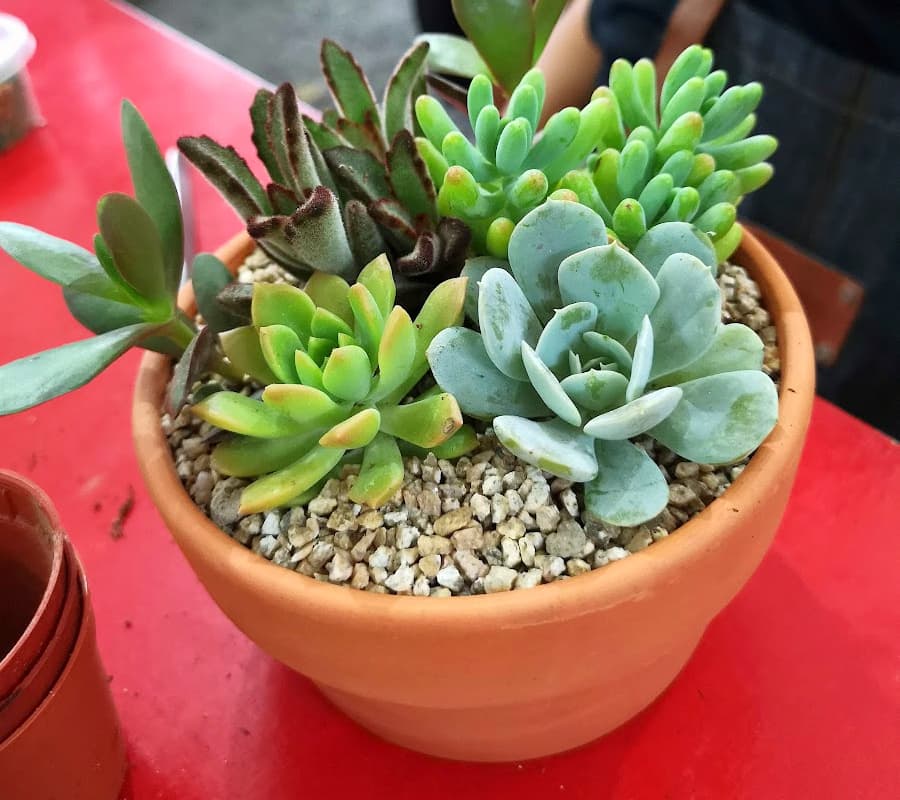
A glazed ceramic pot with one drainage hole will still work well, but the soil will stay moist a bit longer.
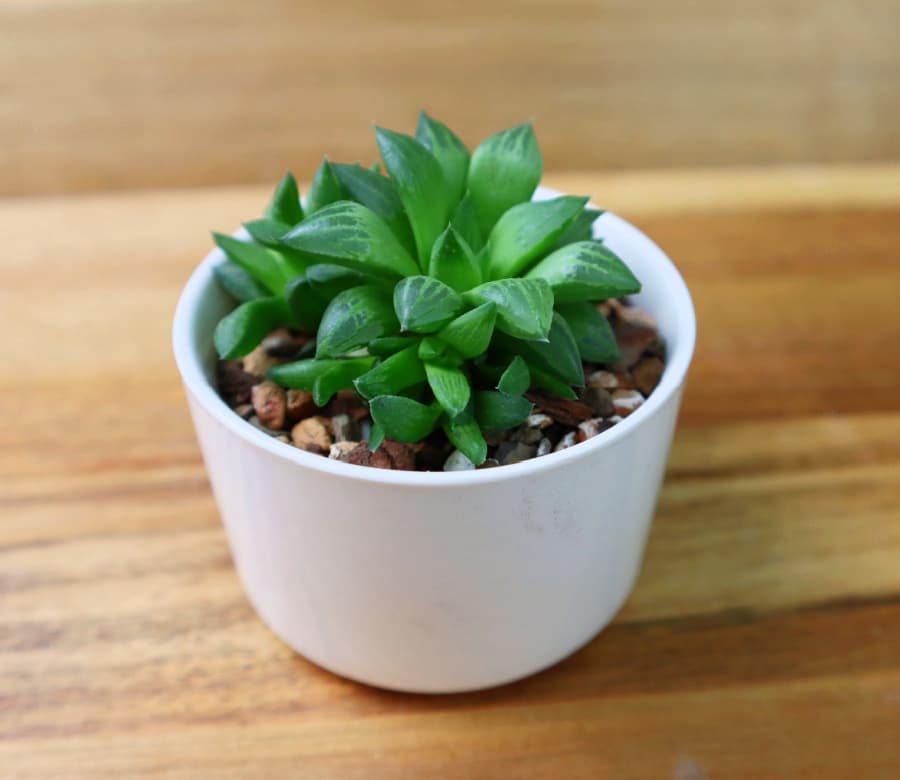
Plastic pots really hold moisture, but they tend to have lots of drainage holes to compensate so it evens out.
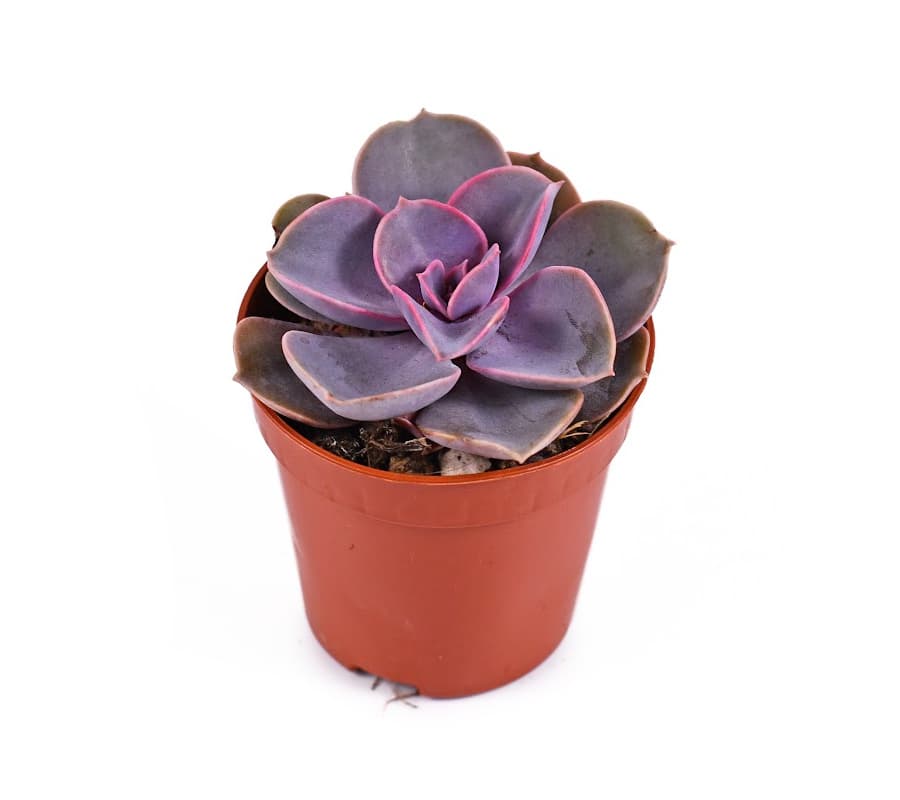
If you’re just starting out and want to know the best pot for your succulent, I recommend the the unglazed terracotta pots.
Just be sure to check for drain holes before you bring them home!
Is your succulent in direct sun or partial shade?
Another thing you’ll want to consider is how much light your indoor succulents are getting.
If they’re in a south facing window with direct sunlight, make sure you water them more often so they don’t dry out and get sad.
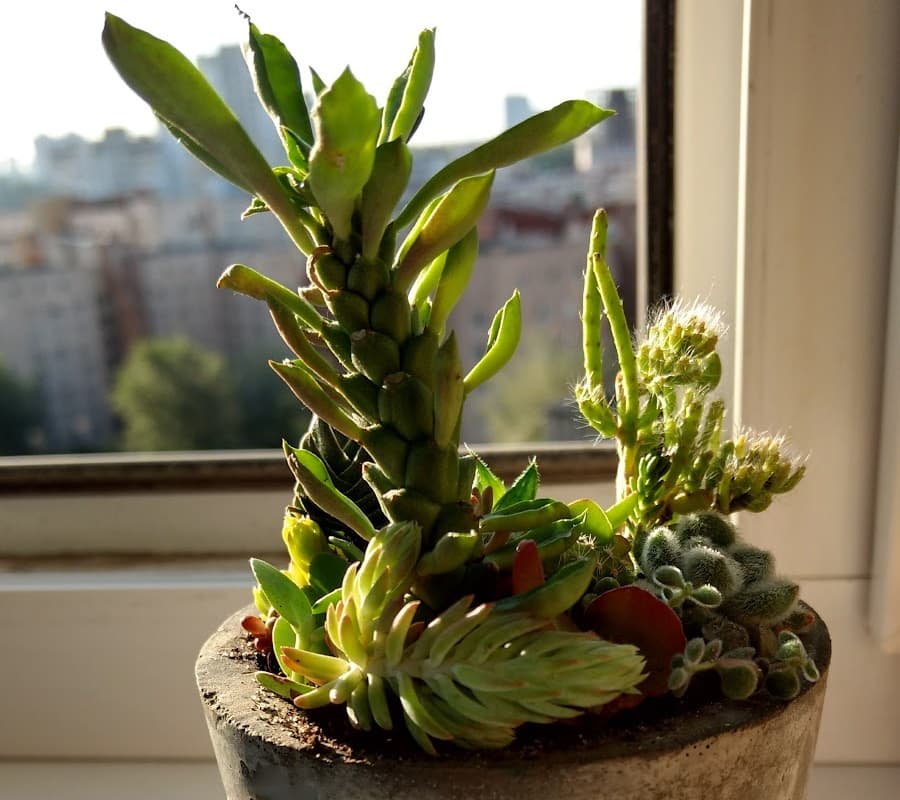
However if your plants are in a shady area, you can let them go a little longer before watering again.
Always test the soil with your finger to see if there is any moisture before you water them.
It’s better to do that then to try and water on a schedule because sometimes they drink up their water pretty fast and sometimes they don’t.
The easiest way to check is to feel around the drainage holes on the bottom of the pot. If they’re cool to the touch (or if you feel moisture), don’t water them yet! Wait a few more days.
If it’s bone dry, you’re probably good to give them a good watering.
Another option is to pick up a moisture meter, which will tell you exactly how moist the soil is before you water. That will take all the guesswork out of it for you!
Should you water differently in the winter months vs. the summer months?
While it’s true that succulents have a dormant period outdoors, your indoor succulents can really be treated the same year round assuming you have some kind of air conditioning and temperatures don’t reach any extremes in your home.
It’s best to keep an eye on your plants and get to know their growing habits. Sometimes they might grow a little slower and if that’s happening, it’s best to tone the watering schedule down a bit.
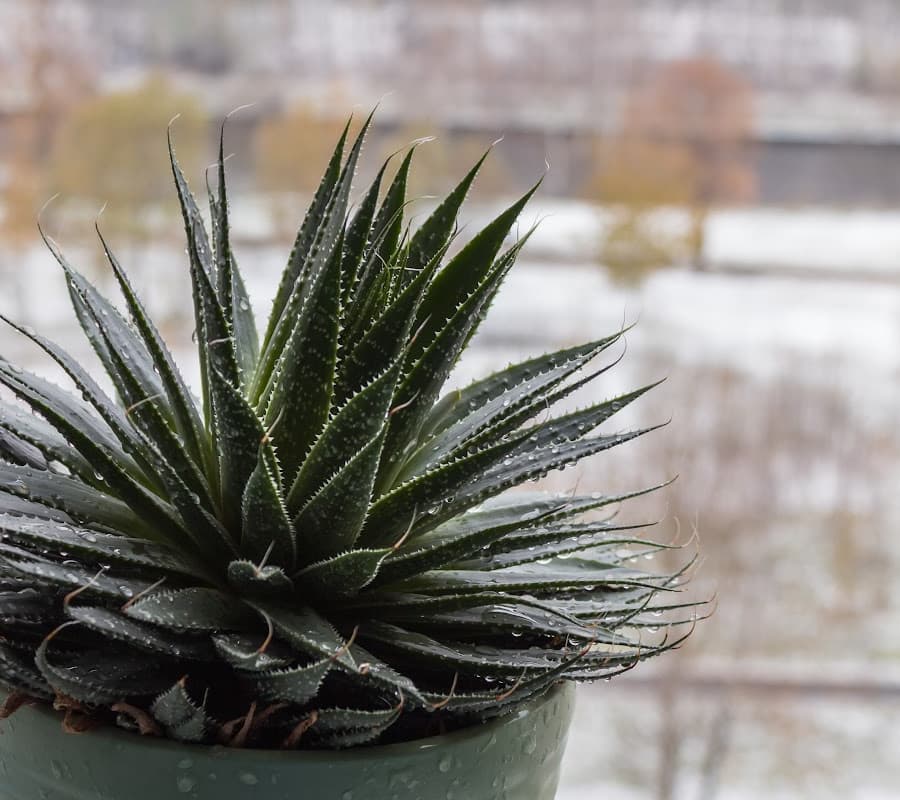
If they’re in the middle of a massive growing season and putting out lots of new leaves and growth, give them as much water as they need (always testing the soil for dryness first!)
So really, as long as we’re only talking about indoor succulents, you can water them the same in early spring and you do in the middle of winter or summer.
Just use the soak and dry method and you’ll be in good shape.
How Do I Know If I Have an Over Watered Succulent?
If your worrying that you may have been over watering this whole time, don’t panic! The first thing you want to keep an eye out for is yellowing, translucent leaves.
As long as your succulent is planted in well draining soil or a good gritty mix, you can just leave it alone until the soil is completely dry before watering again.
Your plant will forgive you eventually and perk back up.
However, if your succulent is in the wrong type of soil with too much moisture for long, you’ll end up with root rot and there’s a good chance your plant will be toast.
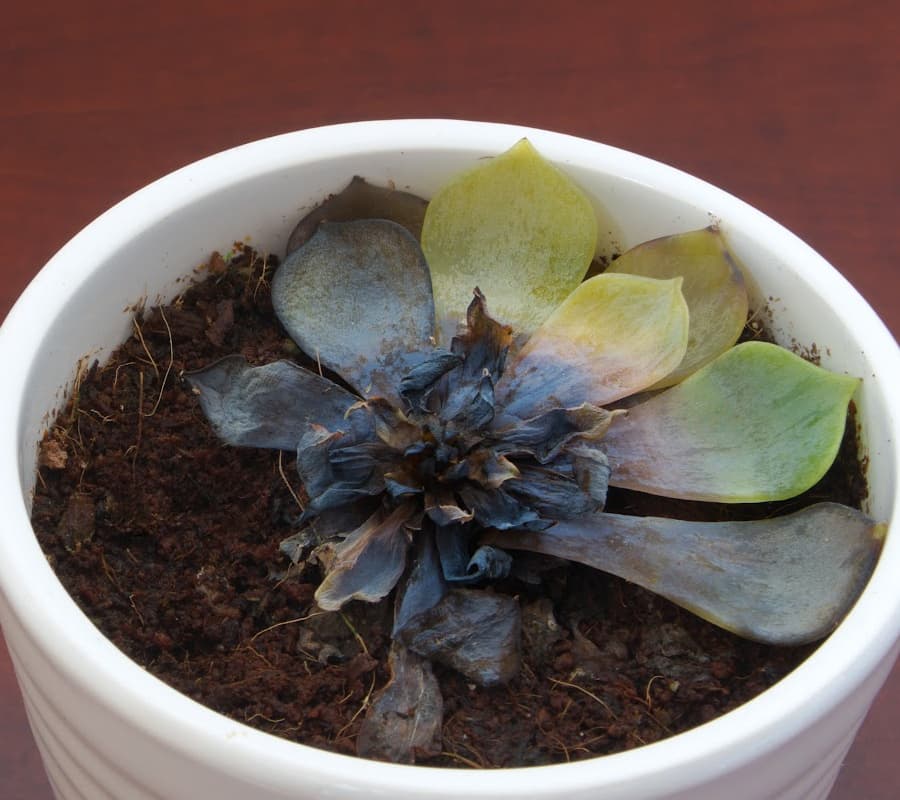
If you realize your plant is rotting, you can cut the good sections off the top and try to propagate it into a new plant. Most of the time it can be saved with that method, but only if you act fast.
One of the main signs of over watering is yellow, mushy leaves.
If you see brown or black rot creeping up your plant, it’s time to pull off some healthy leaves or stems and try to propagate it.
Or if it looks like the guy in the picture above, unfortunately it’s time to toss it and move on.
How Do I know If I Have an Under Watered Succulent?
Under watered succulents will have droopy, wrinkled, and shriveled up leaves. They’ll start to get brown and crispy and the leaves will be a lot thinner than usual.
If you’re succulent starts to fit that description, just water it really good, wait a few days and water it well again.
Do this until it looks perked back up and then reduce the frequency of watering to a normal schedule.
Eventually, if you don’t water your succulent, it’ll get crispy and die. They can go for quite a while before this happens, though.
In Conclusion
Indoor succulents are a great indoor plant option for people who don’t have much of an outdoor garden space.
They’re easy to care for and require very little maintenance, which is perfect if you happen to be busy all the time with work or family obligations.
Once you learn the basic needs of your succulent, they’ll be thrilled to call you their plant parent!
If you have any other questions about watering succulents or have anything you’d like to add, please leave a comment down below and let me know!



